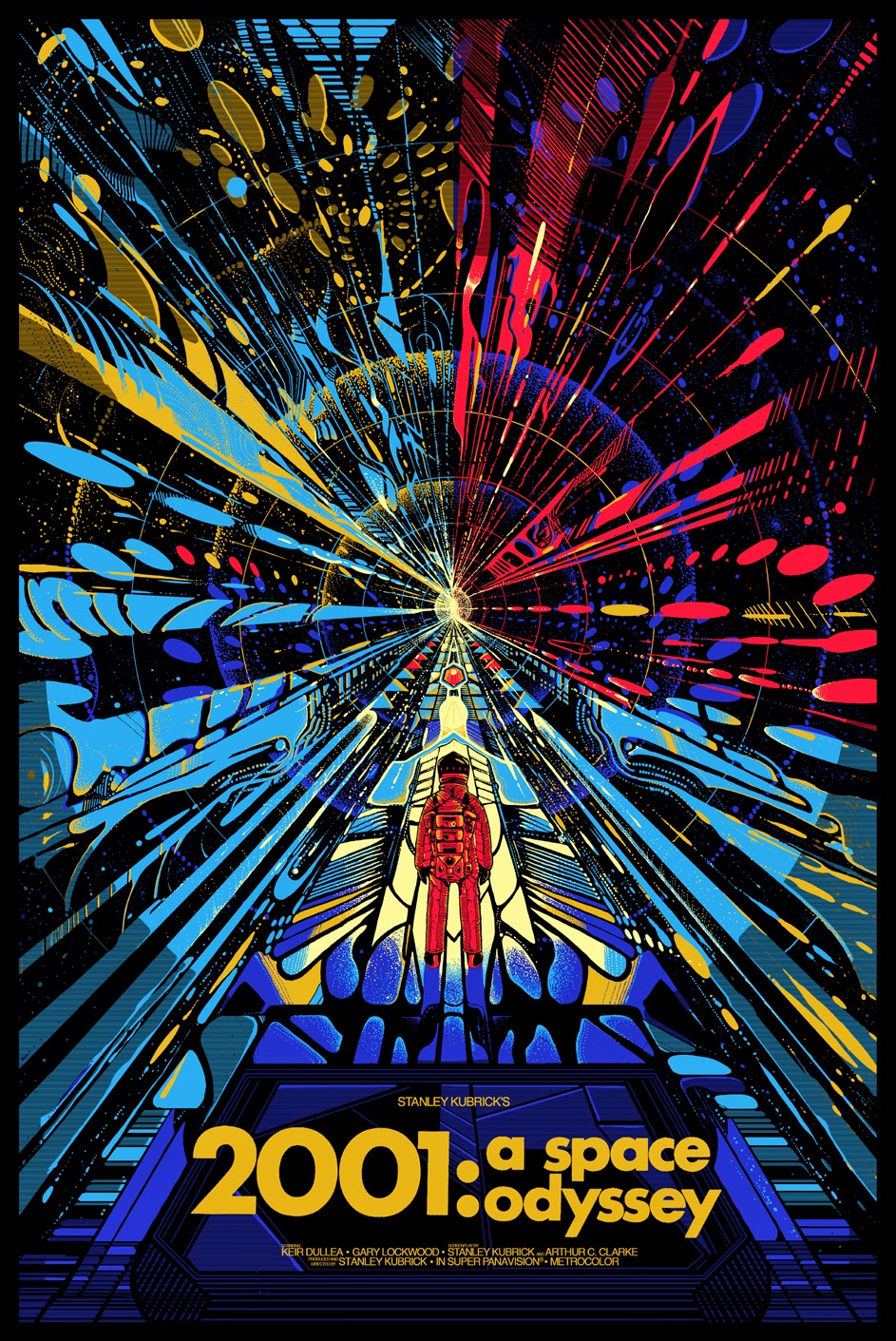As masterfully crafted as Stanley Kubrick's version of 2001: A Space Odyssey is, it's too slow and too quiet at times for my taste. Watching 2001: A Space Odyssey is like attending an art gallery showcasing outer space paintings, only the movie camera moves even slower from shot to shot than even the most seemingly statuesque-like of minimal, millimeterish movements made by hoity-toity art aficionados mesmerized by the paintings inside the gallery. Do those art geeks inside galleries ever actually move, standing enraptured (or comatose) before a painting? If they do, you'd need to set up some time-lapse photography to catch their miniscule movements, as infrequent as a glacier's, it seems.
Yeah, it's a slow moving movie, 2001: A Space Odyssey. Don't get me wrong, though, I like 2001. In fact, certain scenes in the film are all-time favorites of mine. Like the scene where the prehistoric man (Homo erectus?) is going all ape having discovered (presumably) prehistoric man's first weapon --a piece of bone-- smashing said bone into a pile of other bones so that one bone, a tibia looked like, gets ricocheted end-over-end into the air and just as the flying tibia has reached its flight's slow-mo apex, the scene seamlessly transitions to a space station likewise rotating end-over-end: fantastic filmmaking and editing for sure, but I prefer Clarke's novel nevertheless. I prefer the novel mostly because Clarke crafted more meaningful philosophical observations on the page than Kubrick could accomplish with his camera --except for that iconic, Zarathustra-themed tibia-space station segue. And that's why, I think, the movie just plods and plods along. Face it, even though it's a classic, it's a boring classic, like reading The Tale of Genji, while the novel of 2001 builds and builds (and is never boring) towards its monolithic climax, where we witness the birth of the next speculative step in Homo sapiens evolution, the "Star Child," or, the "Fetus In The Bubble-Womb Floating By The Moon, Child," assuming you've only seen the film.
And don't forget HAL, the neurotic computer with the monotone voice, given conflicting commands by his programmers and astronauts, who ultimately jettisons the crew; I like how he's characterized more so in the novel than he is in the film, as well. In the movie, HAL gets reduced to what amounts to a red dashboard light and a voice sounding like, if it were human, had popped one too many valiums. Not very scary. Certainly no Frankenstein. In the novel, though, HAL comes off a lot creepier, edgier, and much more mysterious, because he's not confined to the limits of the filmmaker's finite images, but left alone to however the reader's vivid (and infinite) imaginations envision him.
And in the time it would take a person to watch 2001: A Space Odyssey (does that movie ever end?) one could have easily polished off Clarke's novel. Or two, or three, or four of Clarke's slimmer novels, even, like, say, Against the Fall of Night or Earthlight or The Fountains of Paradise or Childhood's End.


Same genre, different take--check out my post (coincidental, I assure you) from today.
ReplyDelete